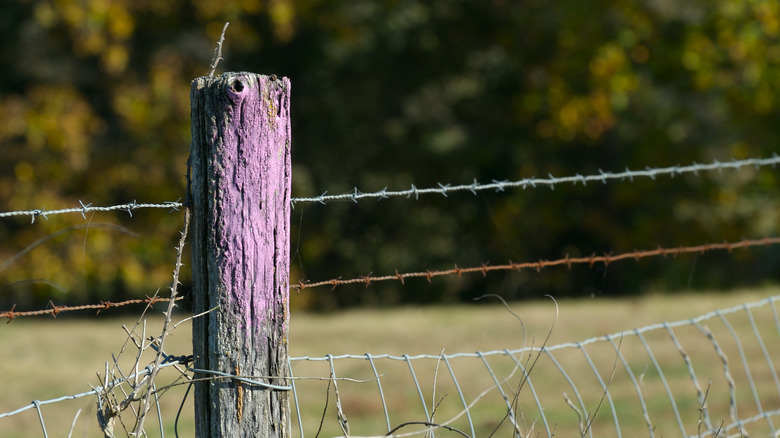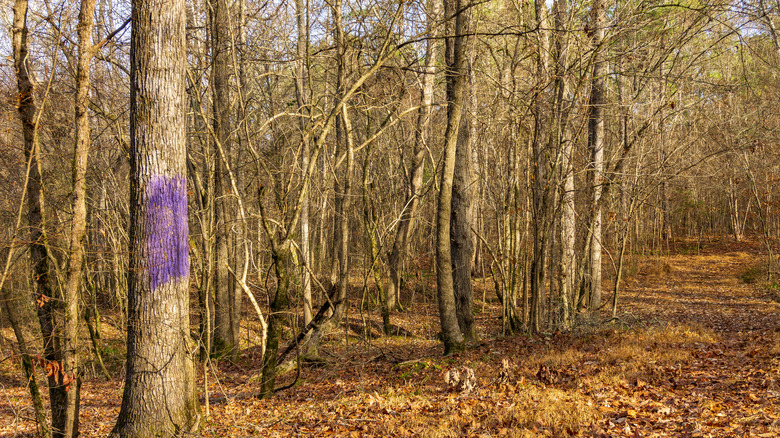Why You Should Think Twice Before Painting Your Fence Purple
Painting your fence is a good idea for more than just aesthetic reasons — as Arizona Painting Company explains, paint can help protect your wood fences from elemental damage, including sun, wind, rain, and snow, which ultimately prevents rot. It's also a lot more low maintenance than stained wood — paint can last as long as 10 years, whereas stain needs to be resealed annually and reapplied frequently.
More than that, painting your fence is a great way to add curb appeal and a pop of color to your home's exterior. While white fences have been a classic exterior staple for many years, there's also plenty of room to play with bolder shades: rich farmhouse red, trendy dark blue, sleek black, etc. That said, you should check with local ordinances before busting out a pan of purple paint for your fence. Not just with your Homeowners Association (HOA) but also with local hunting and trespassing laws.
No trespassing laws
While painting your fence purple may seem innocuous enough, the color is a legal indicator in many states. According to Zareba Systems, purple paint on your fence or post is a common no-trespassing indicator. People paint their fences, trees, poles, or other permanent objects on their property with a bright stripe of purple that won't blow away or be damaged by the elements, ensuring no one can legally trespass on their land.
This is most common for farmers or people with large plots of land and animals since it's a simple, easily recognizable, and permanent way to protect your property line. States with purple paint laws include Alabama, Arkansas, Florida, Illinois, Indiana, Kansas, Maine, Missouri, North Carolina, Pennsylvania, South Carolina, Tennessee, and Texas. If you're planning on painting your fence purple for this reason, check with your specific purple paint laws, as they vary slightly from state to state. While it isn't illegal to paint your fence purple, it may indicate something more than just a visual preference.
Purple paint law rules
Purple paint can indicate more than no trespassing, no hunting, and sometimes only no hunting, like in North Carolina, via Zareba Systems. If you want to use purple paint on your fence to indicate no trespassing or hunting, it's not as simple as painting your entire fenceline — there are regulations.
For example, whether you're painting your fence posts or a tree trunk, you have to start at least 3 to 5 feet off the ground, per Pennsylvania Game Commission. You also have to space the markings no more than 100 feet apart, but you can go closer. The marking must also be 8 inches in length and 1 inch in width minimum, so your fence has to accommodate these dimensions. If you want to mark off a privately owned river, lake, stream, etc., to keep people from fishing or swimming in it without permission, mark trees or fences around the shoreline, according to NetPosse. Anyone who violates the boundaries mapped out by the paint will face trespassing fines unless someone is calling or looking for their hunting dog and is unarmed.


